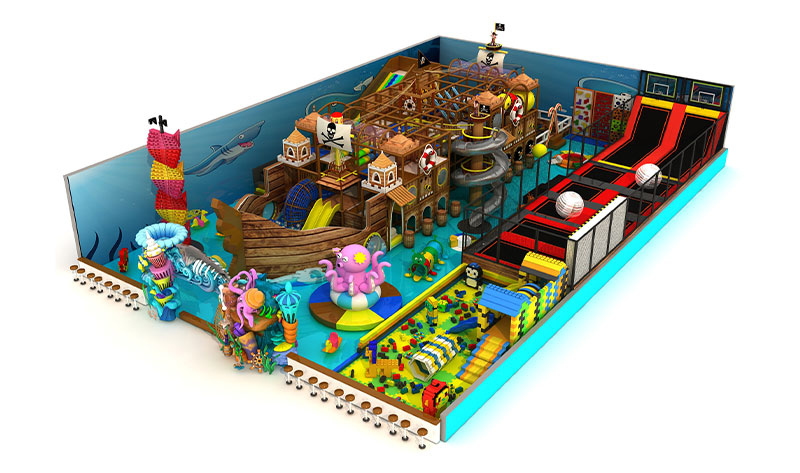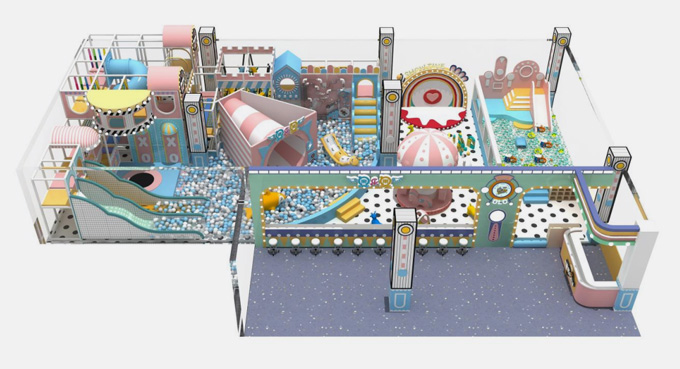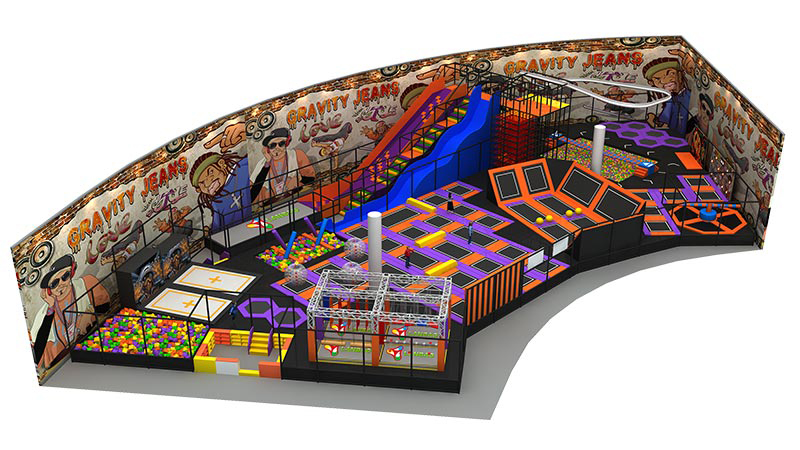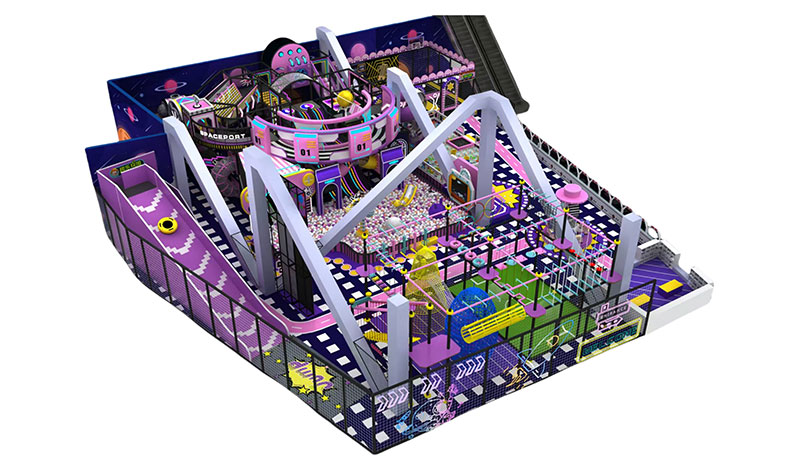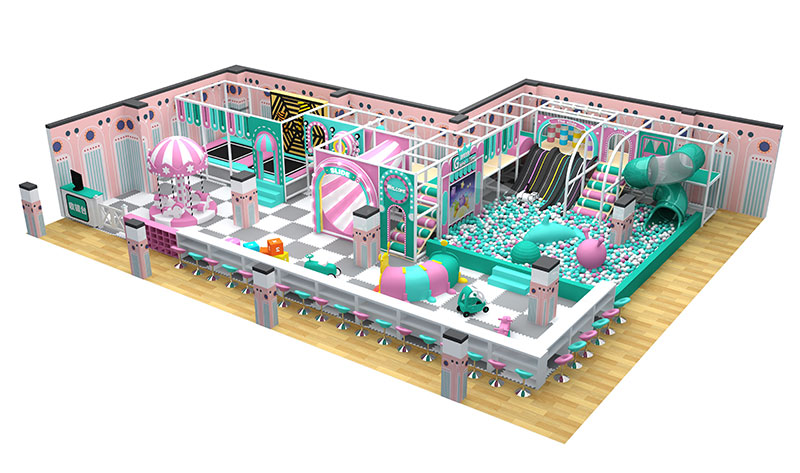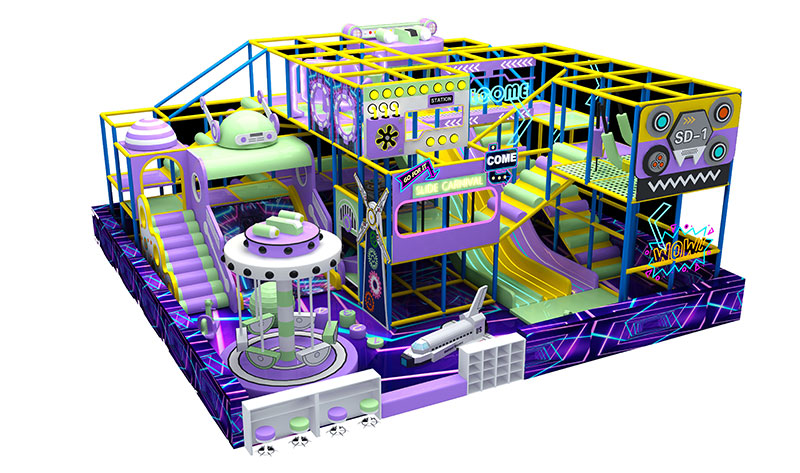Indoor playgrounds in malls have become a popular attraction for families, offering children a fun and safe place to play while parents shop or relax. A well-designed mall playground can enhance customer experience, increase foot traffic, and boost retail sales. In this article, we’ll explore key considerations for designing an effective and engaging indoor playground in a shopping mall.
How to Design a Mall Playground
1. Define Your Target Audience
Before designing a mall playground, determine the age groups you want to cater to. Play areas can be designed for:
Toddlers (1-3 years): Soft play structures, ball pits, and low slides.
Young children (4-8 years): Climbing structures, interactive games, and themed play zones.
Older kids (9-12 years): More challenging obstacles, trampolines, and digital play elements.
Some malls opt for multi-age zones to accommodate different children, ensuring safety and enjoyment for all.
2. Choose the Right Location Within the Mall
The placement of the playground affects its visibility and accessibility. Ideal locations include:
Near family-friendly stores (e.g., toy shops, children’s clothing).
Close to food courts so parents can supervise kids while dining.
In high-traffic areas to attract visitors.
Ensure the space is well-ventilated, has proper lighting, and is easily visible for security.
3. Safety First: Materials and Design Considerations
Safety is the top priority in playground design. Key factors include:
Soft Flooring: Use rubber mats, foam padding, or soft synthetic turf to prevent injuries.
Rounded Edges: Avoid sharp corners on play structures.
Non-Toxic Materials: Ensure all materials meet safety standards (e.g., ASTM F1487, EN 1176).
Secure Fencing:Prevent children from wandering off unsupervised.
Regular Maintenance:Inspect equipment for wear and tear frequently.
4. Themed and Interactive Play Zones
A themed playground enhances engagement and excitement. Popular themes include:
Jungle Adventure: Rope bridges, treehouse structures, and animal-shaped play elements.
Space Exploration:Rocket slides, climbing walls with planetary designs, and interactive light games.
Underwater World: Blue and green color schemes, submarine tunnels, and marine creature decorations.
Adding interactive elements like touch-sensitive panels, motion-activated games, or augmented reality (AR) experiences can make the playground more appealing.
5. Comfortable Seating for Parents
Parents and guardians need a comfortable space to supervise their children. Consider:
Benches with clear sightlines to the play area.
Charging stations for phones and laptops.
Nearby café seating for relaxation.
6. Hygiene and Cleanliness
Indoor playgrounds must be kept clean to prevent the spread of germs. Implement:
Regular sanitization of play equipment.
Hand sanitizer stations at entry and exit points.
Easy-to-clean surfaces (e.g., wipeable vinyl, antimicrobial materials).
7. Accessibility and Inclusivity
Ensure the playground is accessible to all children, including those with disabilities. Features may include:
Wheelchair-accessible ramps.
Sensory-friendly play elements (e.g., tactile walls, quiet zones).
Adaptive swings and low-height structures.
8. Revenue Generation Opportunities
A mall playground can also be a revenue stream through:
Entry Fees:Charging per child or offering membership passes.
Party Hosting:Birthday party packages with private playtime.
Sponsorships:Partnering with kid-friendly brands for themed promotions.
Conclusion
Designing a successful mall playground requires careful planning around safety, engagement, and convenience. By creating a fun, safe, and visually appealing play area, malls can attract more families, increase dwell time, and enhance overall customer satisfaction. Whether opting for a simple soft play zone or an elaborate themed adventure, the key is to balance entertainment, safety, and practicality for both kids and parents.
Would you like recommendations for specific playground equipment suppliers or design firms? Let me know how I can assist further!

